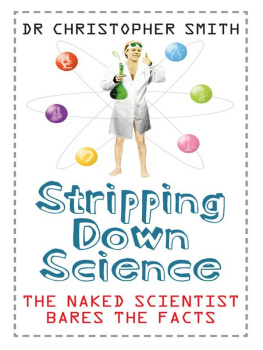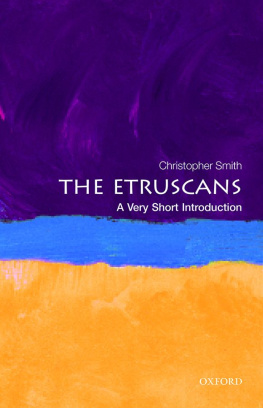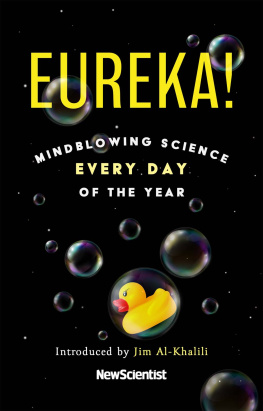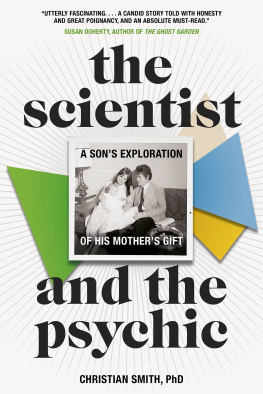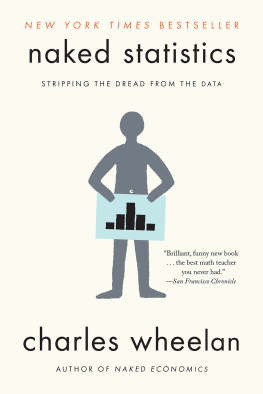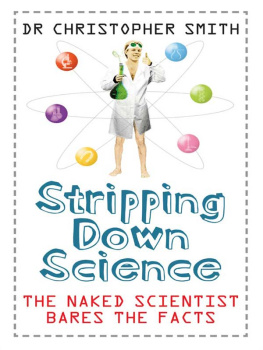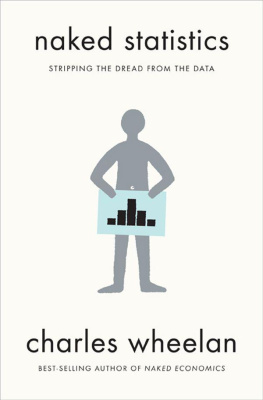Christopher Smith - Stripping Down Science: the Naked Scientist Bares the Facts
Here you can read online Christopher Smith - Stripping Down Science: the Naked Scientist Bares the Facts full text of the book (entire story) in english for free. Download pdf and epub, get meaning, cover and reviews about this ebook. year: 2010, publisher: William Heinemann, genre: Romance novel. Description of the work, (preface) as well as reviews are available. Best literature library LitArk.com created for fans of good reading and offers a wide selection of genres:
Romance novel
Science fiction
Adventure
Detective
Science
History
Home and family
Prose
Art
Politics
Computer
Non-fiction
Religion
Business
Children
Humor
Choose a favorite category and find really read worthwhile books. Enjoy immersion in the world of imagination, feel the emotions of the characters or learn something new for yourself, make an fascinating discovery.
- Book:Stripping Down Science: the Naked Scientist Bares the Facts
- Author:
- Publisher:William Heinemann
- Genre:
- Year:2010
- Rating:3 / 5
- Favourites:Add to favourites
- Your mark:
- 60
- 1
- 2
- 3
- 4
- 5
Stripping Down Science: the Naked Scientist Bares the Facts: summary, description and annotation
We offer to read an annotation, description, summary or preface (depends on what the author of the book "Stripping Down Science: the Naked Scientist Bares the Facts" wrote himself). If you haven't found the necessary information about the book — write in the comments, we will try to find it.
Christopher Smith: author's other books
Who wrote Stripping Down Science: the Naked Scientist Bares the Facts? Find out the surname, the name of the author of the book and a list of all author's works by series.
Stripping Down Science: the Naked Scientist Bares the Facts — read online for free the complete book (whole text) full work
Below is the text of the book, divided by pages. System saving the place of the last page read, allows you to conveniently read the book "Stripping Down Science: the Naked Scientist Bares the Facts" online for free, without having to search again every time where you left off. Put a bookmark, and you can go to the page where you finished reading at any time.
Font size:
Interval:
Bookmark:


All rights reserved. No part of this book may be reproduced or transmitted by any person or entity, including internet search engines or retailers, in any form or by any means, electronic or mechanical, including printing, photocopying (except under the statutory exceptions provisions of the Australian Copyright Act 1968 ), recording, scanning or by any information storage and retrieval system without the prior written permission of Random House Australia. Any unauthorised distribution or use of this text may be a direct infringement of the authors and publishers rights and those responsible may be liable in law accordingly.
Stripping Down Science: The Naked Scientist Exposes The Facts
ePub ISBN 9781742741642
Kindle ISBN 9781742741659
A William Heinemann book
Published by Random House Australia Pty Ltd
Level 3, 100 Pacific Highway, North Sydney NSW 2060
www.randomhouse.com.au
First published by William Heinemann in 2010
Copyright Christopher Smith 2010
The moral right of the author has been asserted.
All rights reserved. No part of this book may be reproduced or transmitted by any person or entity, including internet search engines or retailers, in any form or by any means, electronic or mechanical, including photocopying (except under the statutory exceptions provisions of the Australian Copyright Act 1968), recording, scanning or by any information storage and retrieval system without the prior written permission of Random House Australia.
Addresses for companies within the Random House Group can be found at www.randomhouse.com.au/offices .
National Library of Australia
Cataloguing-in-Publication Entry
Smith, Christopher, 1975.
Stripping down science: the naked scientist exposes the facts.
ISBN 978 1 74166 645 8 (pbk).
Science Popular works.
Dewey classification: 500
Cover design by Luke Causby/Blue Cork
Internal design by Xou Creative, www.xou.com.au
Internal illustrations by Shane Nagle, www.shanenagle.com
To Sarah, Amelia and Tim,
whom I adore.

Most people are comfortable with the concept that plants use sweet rewards to attract insects, which fly in for a drink of nectar and pick up pollen in the process. When the same bugs later drop in on other plants of the same species, they shed some of the pollen and fertilise the flowers.
But its not true that plants aim to be attractive to insects all the time, as scientist Irene Terry from the University of Utah, together with colleagues at the University of Queensland, discovered when she began to study one member of a family of primitive plants called cycads. Dubbed living fossils because they have hardly changed since the time of the dinosaurs, cycads resemble palms or ferns, although they are not related to either. In fact, theyre members of the conifer and fir family and, consequently, reproduce using a fir-cone-like fruiting body which pops up for a fertile period lasting about four weeks every one-to-four years.
Like humans, these plants come in male and female varieties, with the male cones producing pollen, which then fertilises the female cones. Previously, scientists thought that the wind carried the pollen between the two, until it was realised that the scales that make up the cones are packed together too tightly for the pollen to enter efficiently. Intrigued by the mystery, the researchers subsequently discovered that a species of insect called a thrip in this case Cycadothrips chadwicki was responsible. The insects visit the male cones to eat the pollen and then carry some of it to the female cones. But therein lies a problem: how to persuade the insects to abandon their banquet in the male cones and visit the female cones, which are devoid of pollen and therefore food?
It turns out that the cycads resort to the plant equivalent of chemical crowd control to force the insects to pay for their free lunch. Each day, between 11 am and 3 pm, the temperature of the cones, and particularly the male cones, shoots up by over 12 degrees Celsius. The plants achieve this thermal feat by breaking down stockpiled starch, sugars and fats. The resulting temperature boost makes the environment inside the cone uncomfortable for the thrips. Its also accompanied by a million-fold surge in the production of an odorous chemical called beta-myrcene.

At low levels, thrips find the smell attractive, which helps to lure them into the cone in the first place; but at higher concentrations it smells repugnant and drives them out. Humans also find the stink offensive. It takes your breath away. Its a harsh, overwhelming odour like nothing you ever smelled before, remarks Irene Terry, presumably while holding her nose.
So, repelled by the smell but still covered in the vestiges of their last pollen meal, the insects abandon their feast and seek refuge in the surrounding bushes. By mid-afternoon the cones have cooled again and the concentration of beta-myrcene drops, encouraging the thrips to return, pollen still clinging to their bodies. And, since the male and female cones both look and smell alike, the insects flock back to both, carrying pollen into the female cones and fertilising them.
The cycad cycle repeats itself day after day until the males wear out and the females are happily pollinated, says Terry. Not that different from humans then, despite the 300-million-year age gap!
Sexual subversion elsewhere in nature
Its not just cycads that have mastered the art of olfactory allure. Other species have also evolved to take advantage of insects insatiable desires for food, including an orchid that makes itself pong like a bee to attract a hungry hornet.
Until recently, no one was sure what pollinated the Dendrobium sinense , a pretty mounted a 121-hour vigil to spot potential pollinators. The flowers are actually rewardless, meaning that they dont produce any nectar, but they still received passing interest from 35 insect visitors, 30 of which were a species of hornet that is known to prey on honey bees.
Intriguingly, the arriving hornets didnt just inspect the flower and then buzz off, but pounced aggressively, aiming for the flowers red centre, then abruptly left. A closer look revealed that, in doing so, they were carrying off pollen sacs from the flower and depositing pollen from other members of the same orchid species. But why would they do this when they stood to gain nothing in return?
The answer, it turns out, is a story of sexual subversion never seen before in nature. To get to the bottom of it, the team used solvents to extract and analyse the odorant chemicals from the flowers. They then presented each of the chemicals they had isolated to the antennae of a hornet which had been wired up to an electro-antennogram. This meant that when a chemical was present to which the antenna was sensitive, it produced electrical discharges which the team could measure.
Five chemicals were found in the orchid scent that produced a positive response, which were benzyl alcohol, benzyl acetate, octadecan-1-ol, eicosan-1-ol and 11-eicosen-1-ol. This latter molecule made the researchers sit up like theyd been stung because its used by bees as an alarm pheromone and is highly attractive to foraging workers.
Font size:
Interval:
Bookmark:
Similar books «Stripping Down Science: the Naked Scientist Bares the Facts»
Look at similar books to Stripping Down Science: the Naked Scientist Bares the Facts. We have selected literature similar in name and meaning in the hope of providing readers with more options to find new, interesting, not yet read works.
Discussion, reviews of the book Stripping Down Science: the Naked Scientist Bares the Facts and just readers' own opinions. Leave your comments, write what you think about the work, its meaning or the main characters. Specify what exactly you liked and what you didn't like, and why you think so.

